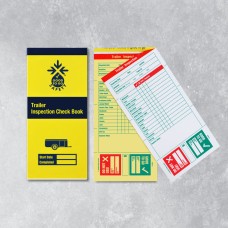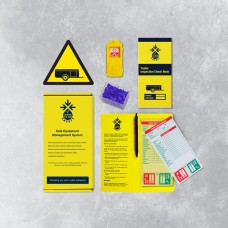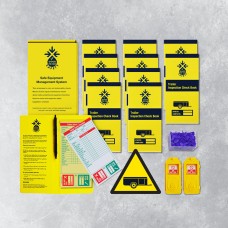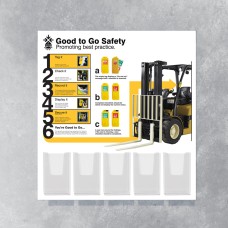Trailer Inspections - Workplace Inspection Checklists
A startling 89% of trailers tested failed NTTA checks
By global standards British roads are very safe, but every death and injury is a tragedy for the families involved. It is clear, including from roadside checks by DVSA, undertaken for this government report that many light trailers are used on public roads in a defective state.
From the main data source which covers all of 2017, there were approximately 20 collisions resulting in injury or death where a vehicle defect in a trailer was a contributory factor, and that defect would have been identifiable if present at testing. DVSA undertook roadside checks to provide additional data on light trailers for this report. About 50% of O2 trailers checked were non-compliant in random stops, as opposed to about 20% of GB heavier (O3 and O4) trailers, with the rate of immediate prohibitions (i.e. defects so dangerous repairs were needed before further use of the trailer) being 29% for O2 and 5% for heavier trailers.

The National Towing and Trailer Association (NTTA) provided data from 307 free safety checks they conducted at NTTA certified servicing centres, between July 2017 and January 2018 which unveiled a startling finding with 89 per cent of those trailers tested, failing NTTA checks with one or more defects recorded.
If used for work, then a trailer will fall under the usual requirements of PUWER to provide safe equipment and the need to carry out routine checks. In addition, The Road Vehicles (Construction and Use) Regulations 1986 specify the need for maintenance and use of vehicles so as not to be a danger to any person in or on the vehicle or trailer or on a road.
Good to Go Safety enables a tag to be attached to a trailer (usually at the hitch or coupler point) and serves as a reminder to carry out a pre-use trailer safety inspections checklist before taking to the road. The trailer safety inspections checklist allows a run through of critical component checks including chassis, brakes, lighting, wheels etc as well as the load itself. The tag can be attached using cable ties, close to the hitch point for maximum visibility and will advise users when the trailer is “Good to Go”. A tamper evident seal will help ensure the trailer safety inspections checklist remains in place until the next safety inspection is due. A duplicate copy of each completed trailer safety inspections checklist provides documented evidence of a safe equipment management system (SEMS) and could prove indispensable in the event of an accident.
If the assurances provided by completing a trailer walk around check are not enough to convince you of the importance of safety maintenance checks, then the fact you can be fined up to £2,500, be banned from driving, and get 3 penalty points for using a vehicle in a dangerous condition should help to focus the mind further. By using the Good to Go Safety system to complete and record your pre-drive inspections you will be taking a significant step towards improving road safety, reducing your maintenance costs and meeting your legal responsibilities.
Trailer Inspection Books - 25 Checklists
There is evidence showing that towing trailers can be more likely to result in serious or fatal road..
£6.20
Trailer Inspections - Weekly Checklist Kit
There is evidence showing that towing trailers are more likely to result in serious or fatal road ac..
£37.10
Trailer Inspections - Daily Checklist Kit
There is evidence showing that towing trailers are more likely to result in serious or fatal road ac..
£109.50
Trailer Poster - Visual Inspection Checklist
Our trailer safety poster has been designed to highlight key components of a trailer and reinforces ..
£21.77
Inspection Information Station
The information station will provide your workplace with the ideal central location to store inspect..
£233.20
Inspection Wallet and Pen
A handy wallet that not only provides additional protection from the elements but also gives inspect..
£6.20
Weather Resistant Inspection Holder
These industrial strength pockets have a press seal fastening to keep important documents clean and ..
£6.31
Inspection Book Dispenser
Allow the storage of checklists in a central location for quick and easy access to important inspect..
£13.25








